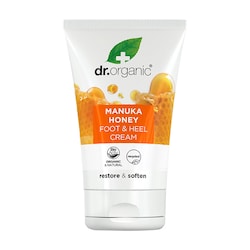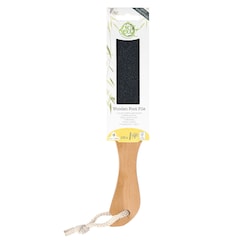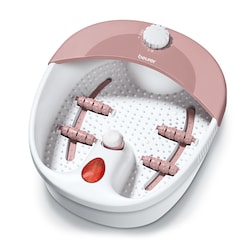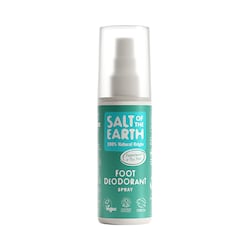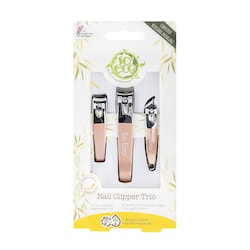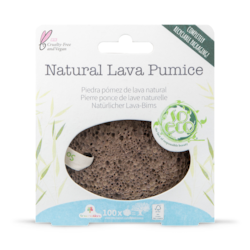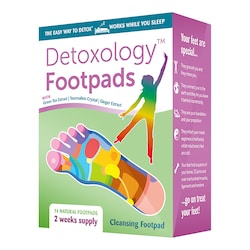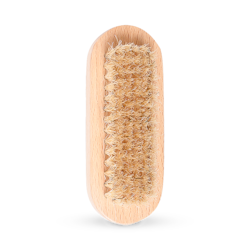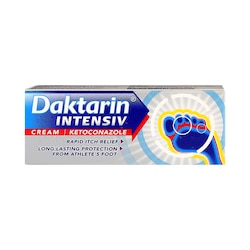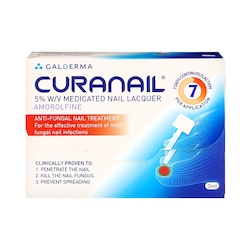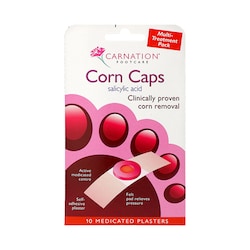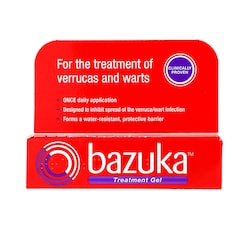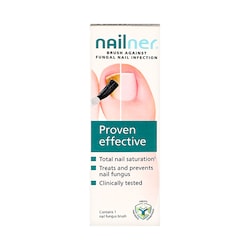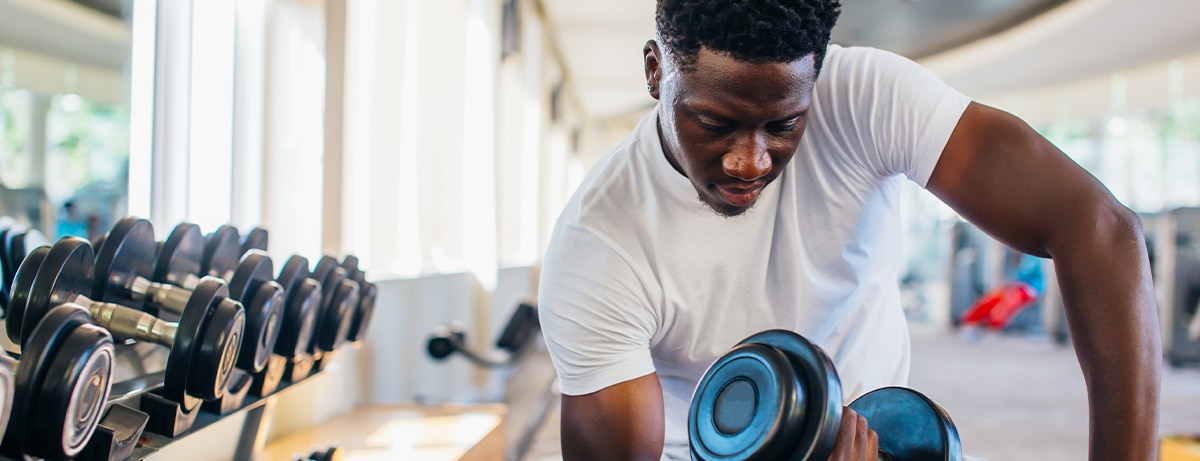20% off £35
Your ultimate guide to footcare
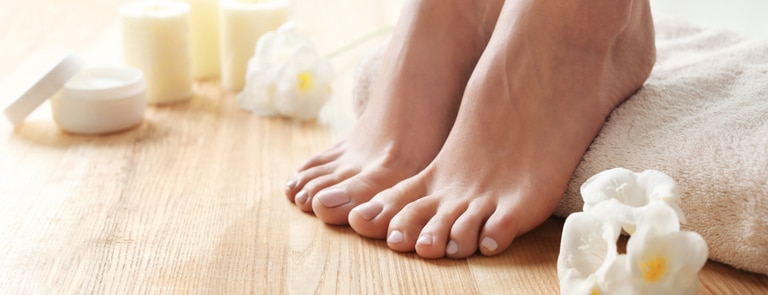
Just how much care and attention are you giving your tootsies?
So, you spend the winter with your feet wrapped up warm. Deprived of fresh air and moisture. Then the summer comes, and you expose them to everything!
The point is, you are on your feet every single day and you put your feet through a lot. Yet they are one of the most overlooked parts of the body.
Your poor soles, toes and heels need a bit of TLC and we’re going to help you achieve your feet goals. In this guide we’ll go through the full footcare routine – from why you should do it, to how you should be doing it – by the time we’ve finished with you, you’ll be hot to trot!
How do I take care of my feet?
I guess when we think of footcare you immediately think pedicure or beauty treatments for your feet. But it doesn’t always have to be so complicated.
Yes, of course much like a pedicure - footcare is about the maintenance and treatment of your feet. But unlike cosmetic treatments that you may have once a month, or once every couple of weeks if you’re lucky – your foot care routine is something you should be doing every day as part of your long-term feet care hygiene.
General footcare advice
The NHS offers some great general advice on foot care, along with a few simple do’s and don’ts that will give you some idea of typical ways you can tend to your trotters.
Do's
- Use a foot file to remove hard skin
- Use moisturiser to keep the skin soft
- Wear footwear that suits your foot shape
- Use padding or insoles to reduce pressure on joints
- Go for a walk (even if it’s just round the house) to improve circulation and keep joints moving
Dont's
- Sit with your legs crossed as this reduces circulation
- Use corn plasters or paste as they contain acids that can break the skin down which may lead to infection
- Use razor blades or sharp implements as they may be unsterile, which may lead to infection
- Pick corns or callus as this can lead to infection
- Apply moisturising cream to corns between toes
How can I take care of my feet at home?
Firstly, it’s recommended that you wash your feet with a mild soap in warm, not hot water. It’s important not to dry your skin out, so there is no need to soak your feet, the point is to wash them.
Then take your time to dry your feet by gently rubbing them with a towel and making sure you dry between your toes – gently so you don’t split the skin. If this is something that happens to you, and your skin tends to be moist between the toes then it’s recommended that you use a cotton bud moistened with surgical spirit, daily to begin with, you can then reduce daily as your skin develops.1
You should avoid putting cream between your toes as the skin is soft enough, hence the suggestion to use surgical spirit. If you tend to get dry skin on your feet then it’s advised that you moisturise, as the skin tends to be quite dry and in need of moisture.2
And finally, cut your toenails straight across following the curve of the end of the toe. Do not cut them down the sides as this may result in ingrown toenails. If your nails are thick or you find them difficult to cut, use a foot file weekly.3
Summary
- When washing your feet try to use warm rather than hot water. Also, wash them rather than soak them so your feet don’t dry out.
- Avoid putting creams between your toes, they will already create a lot of moisture and this can be a breeding ground for infection if you’re not careful.
8 at-home foot care essentials
So, you should now have a good idea of what needs doing. Next you need to know what kit you’ll need to do it.
We’ve put together 8 home foot pamper kit essentials to bring your foot care routine to life!
1. Nail clippers
For hygiene reasons, we suggest that you have one pair of nail clippers for your toenails, and another smaller pair for your fingernails.
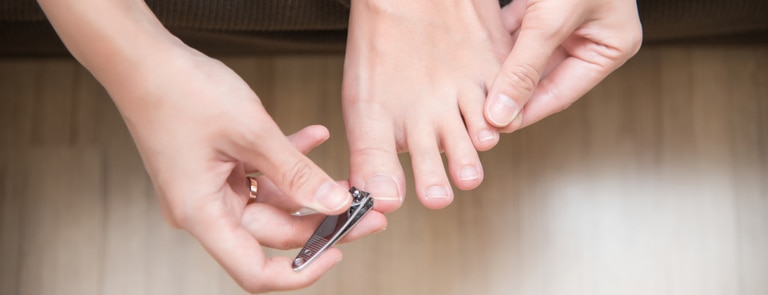

We'd advise cutting your nails once a month or six weeks to avoid pain and injuries from overlong nails pressing against your shoes. Clip your nails straight and try to leave no more than a 1-2mm gap on the tip of each toe.
2. Pumice stone
Pumice stone is actually a piece of volcanic rock. Its abrasive face is perfect for helping remove hard, dead skin off your heels, toes and other areas of the feet that might get tough skin.
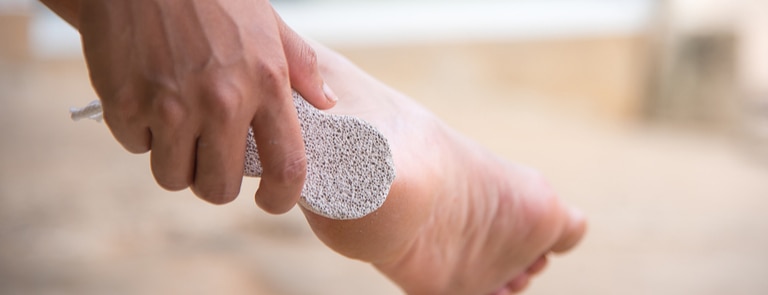

To use: soften your feet in warm water, wet the pumice stone and then gently rub over the feet in a circular motion, making sure you remember to rinse often.
One finished, scrub the stone with a firm brush and leave to try.
3. Foot cream
The next stage of your routine should include a good quality foot cream. It’s recommended that you look for a cream which contains synthetic urea, this is known to hydrate and moisturise the skin – making it soft and supple.
You can achieve this by rubbing the cream all over your feet, avoiding the areas between your toes. This is because it’s a notoriously most area already, so adding more moisture can result in infections such as athletes’ foot.


4. Gel plasters
If you get blisters its advised that you use gel plasters as they can cushion and protect the affected area. This will reduce any discomfort you may experience
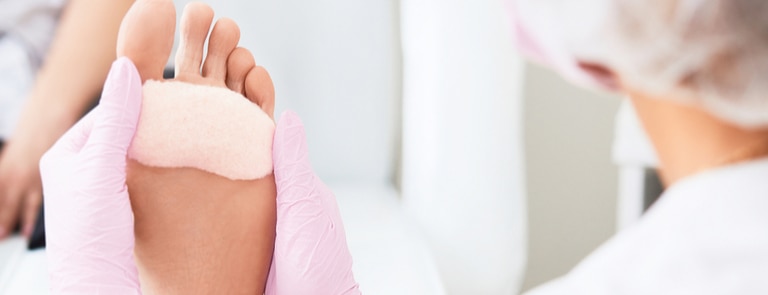

5. Anti-chafing gel
If you’re breaking in new shoes, trainers or heading out on a long run it might be worth applying some anti-chafing gel.
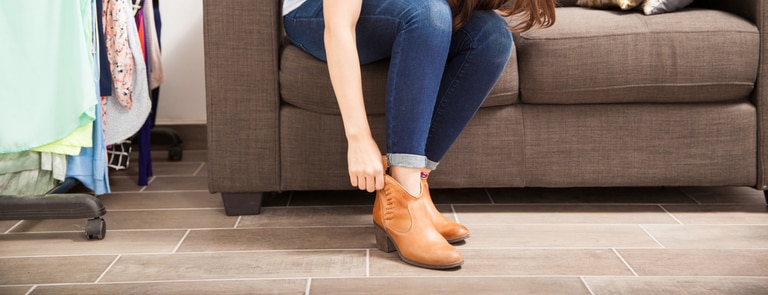

Blisters are caused by friction on the feet, adding a gel such as this will help alleviate any discomfort.
6. Antiperspirant spray
Your feet have more sweat glands per inch than anywhere else on your body. This means it may be worthwhile to carry a foot spray, or if you prefer an underarm deodorant will work just fine too.
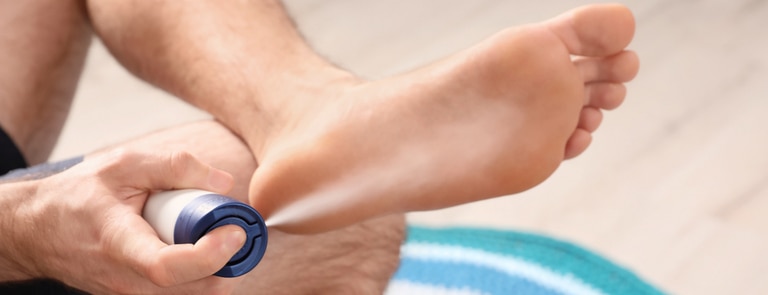

7. Antibacterial soap
Another reliable way to stop any foot odour is by washing your feet with antibacterial soap. This will help, particularly if you play a lot of sport or have an active job.
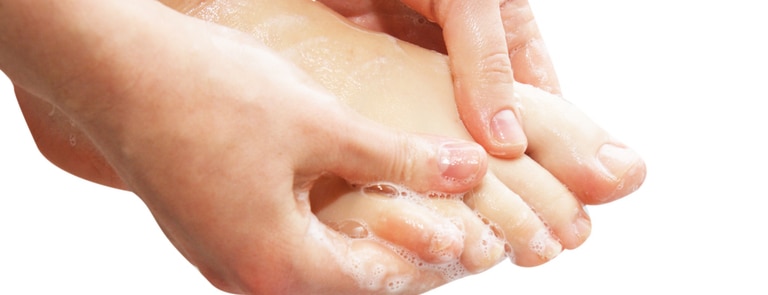

8. Sun cream
For the summer months it's essential that you apply sun cream to your feet. As we all know, sunburn can be agonising so it’s a good idea to keep your feet covered.
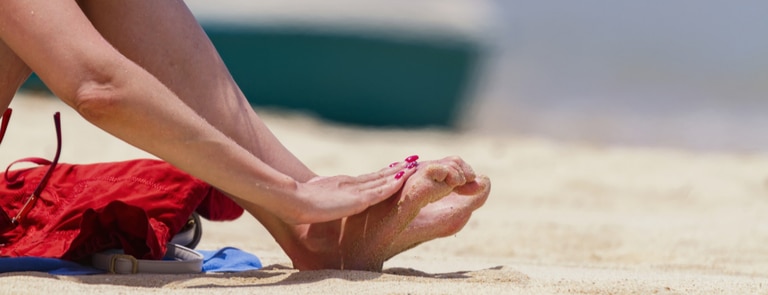

Your foot care questions answered
We've rounded up the most popular foot care questions - here are your answers!
How do I get rid of hard skin on my feet?
There’s a number of reasons that you might be getting hard skin on your feet. It can happen when your feet are wrapped up in winter or when you’re wearing open shoes in summer, so it’s pretty hard to avoid.
Hard skin can be different for different people as skin hardness is done on a scale rather than a condition you do or don’t have.4 The most common area to get dry skin on the feet is on the ball or heel of the foot. This is often yellowish in colour and not very sensitive to touch. These areas of skin are known as calluses.5
Calluses grow when the skin rubs against something, such as a tight a shoe. Over time this can develop into dryness and subsequent cracked heels.6
This build up skin can usually be removed by using a foot file which is used by exfoliating the skin and removing hardened, or dead skin off the heel to keep your feet nice healthy.
How often should feet be washed?
You are on your feet every day, and much like your armpits they create a lot of sweat. So, we would definitely recommend that you wash your feet every day. As above, make sure you use a mild soap and warm water, wash thoroughly and enjoy your great feeling feet.
Should I let my feet breathe?
It’s recommended that you let your feet breathe, particularly if you wear socks all the time and do a lot of exercise.7
Both of these things can lead to odour, and who wants that?
In extreme cases, not allowing feet to breathe can lead to athlete’s foot or infection. So, follow the above steps to keep your feet hygiene under control.
Is it bad for your feet to wear socks all the time?
Yes, for the same as previously mentioned. Keeping your feet wrapped up all the time won’t allow them to breathe, which can cause infection if you’re not too careful.
Give them a clean, allow them to breathe!
Should you file your feet wet or dry?
When looking after your feet it’s best practice to file your feet when dry.
If your skin is particularly dry and you have calluses, it might be worth soaking your feet prior to using a file. This will allow them to soften and easier to remove once dried.
You should NEVER file the skin when wet as this can weaken the skin area and this can cause infection further down the line.8
How can I make my feet softer overnight?
You put your feet through a lot, and as we’ve established, its important to look after them. But how do you give them the attention they deserve to keep them nice and soft.
There are in fact four simple ways that might help you get your feet softer.9
-
Exfoliate with a foot scrub
Dead or dry skin can become patchy and uncomfortable. Regular exfoliation of your trotters can help you remove any dryness and may give you softer, smoother feet
What is best homemade foot scrub?
You can make your own easy homemade, exfoliating foot scrub by adding the following ingredients to give your feet the attention they deserve:
What you need:
- 110g olive oil (or any oil of your choice)
- 110g brown sugar
- Spoonful of honey
- Juice of a lemon
How to use:
- Combine all the ingredients together until they form a paste.
- Allow your skin to prepare for the scrub by soaking your feet in warm water for 10-15 minutes.
- Apply and massage a small amount of scrub to your feet, giving particular attention to areas like your heels and balls of your feet where dry skin is more likely to appear.
- Leave the scrub on for a few minutes then rinse off with warm water.
- For best results, moisturise your feet thoroughly, avoiding areas between your toes.
-
Petroleum jelly
If you happen to have blackened feet or cracked hells, then petroleum jelly could be a useful addition to your foot care regime.
Petroleum jelly is a mixture of mineral oils and waxes which help seal your skin with a water protective barrier. The idea is that you add a healthy amount to your feet before bedtime, wearing socks so you don’t ruin your bedding and wake up the next morning with baby soft feet.
-
Vegetable oil
One great home-remedy that may help soften your feet is vegetable oil. This can be any oil you might keep in your kitchen, such as olive or coconut oil.
How to use:
- Soak your feet in warm soapy water.
- Dry them thoroughly.
- At this point it is recommended that you use a pumice stone or stone brush to remove any dry skin.
- You should then cover your feet in your chosen oil. This is probably best to do before bedtime to allow the oil to work its magic, and again you should wear socks to avoid ruining your sheets.
-
Use aloe vera gel
Aloe vera is a moisturiser for dry or blistered feet. It contains soothing and moisturising properties that can help you remove damaged or dead skin from your heels. You can do this by simply applying aloe vera gel to your feet and heels then leaving overnight if possible.
What are common foot problems in older adults?
As you get older, problems with your feet may become more common. Our feet support the weight of bodies and get put under a lot of pressure on a daily basis, so it’s no real surprise that one in three adults over the age of 65 experience foot pain.10
Some of the most common foot problems in older adults include:11
Bunions
According to the NHS bunions are small bony lumps that appear on the sides of the feet, the only way you can get remove them is with surgery.12
Corns and calluses
Corns and calluses can be hard, thick and often painful areas of skin that can develop on your feet. They’re not often serious and can be treated yourself at home.13
Hammertoes
Hammertoes can occur on your small toes. They are often painful in the joints of your toes, which may bend because of the condition.14
Ingrown nails
Ingrown toenails are a common problem where your nails grow inwards. They usually happen on the big toe and can be painful.
If this is something you suffer with, you can treat them yourself by soaking your feet in warm water up to 3-4 times a day, which will soften the skin around the toes.
If you are in pain and are experiencing any of the above problems, you should contact your GP for a professional opinion.
Last updated: 24 May 2021
- https://www.southtees.nhs.uk/services/podiatry/general-footcare-advice/
- https://www.amope.com/blogs/problems-solutions/why-is-it-so-important-to-remove-hard-skin-from-your-feet
- https://www.amope.com/blogs/problems-solutions/why-is-it-so-important-to-remove-hard-skin-from-your-feet
- https://www.amope.com/blogs/problems-solutions/why-is-it-so-important-to-remove-hard-skin-from-your-feet
- https://www.thehealthy.com/foot-care/ways-podiatrists-say-youre-killing-your-feet/
- https://www.wikihow.com/Use-a-Foot-Scraper
- https://www.southtees.nhs.uk/services/podiatry/general-footcare-advice/
- https://www.wikihow.com/Use-a-Foot-Scraper
- https://www.healthywalking.com/blog/item/135-what-are-the-most-common-foot-problems-in-older-adults.html
- https://www.healthywalking.com/blog/item/135-what-are-the-most-common-foot-problems-in-older-adults.html
- https://www.healthywalking.com/blog/item/135-what-are-the-most-common-foot-problems-in-older-adults.html
- https://www.nhs.uk/conditions/bunions/
- https://www.nhs.uk/conditions/corns-and-calluses/
- https://www.nth.nhs.uk/content/uploads/2017/08/Comm10181-hammer-toe-surgery-arthroplasty-arthrodesis.pdf



